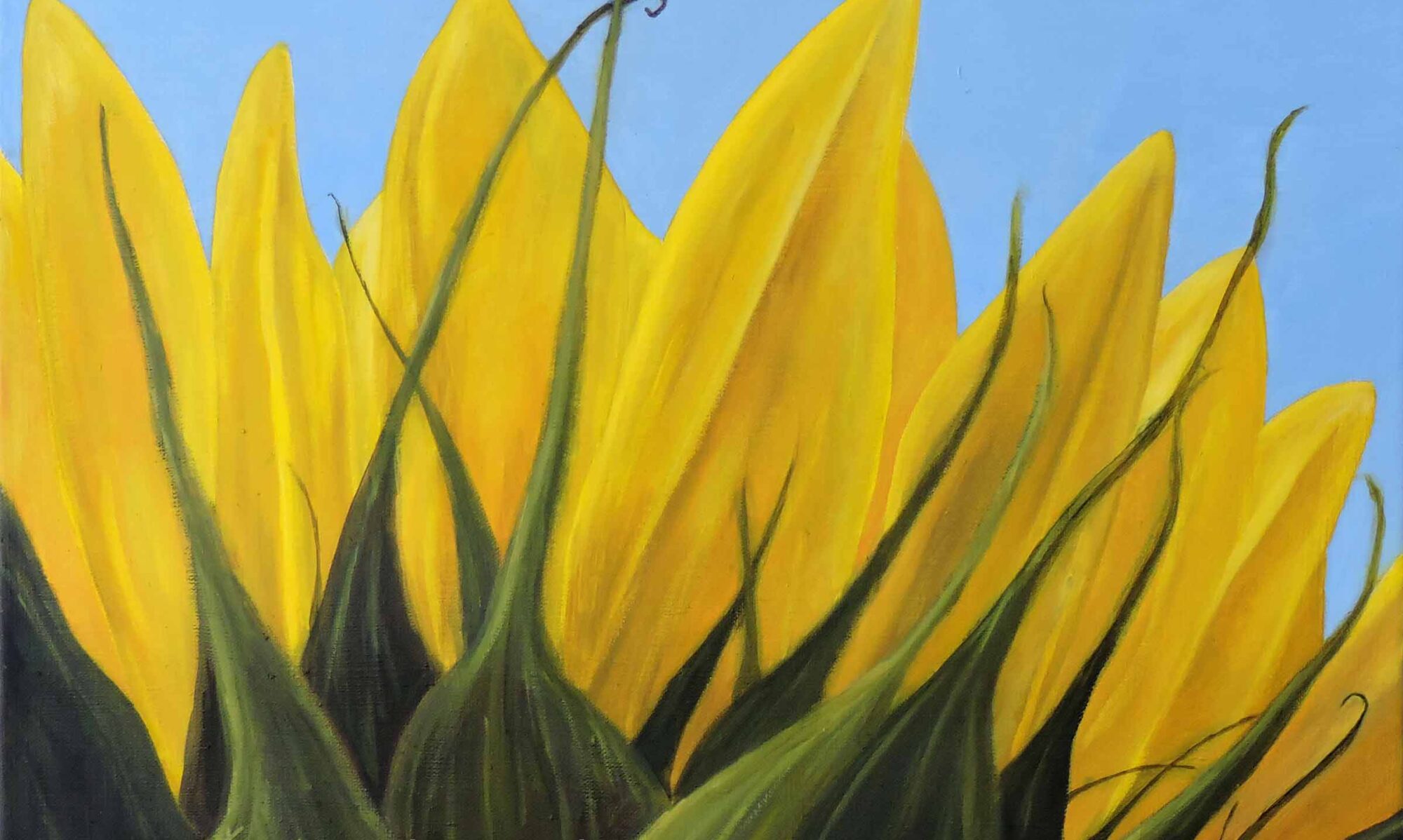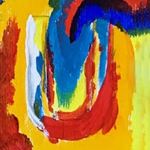
UKIYO-E | UTILITARIAN ART
Quick links to more art terms and definitions are located at the end of the list.
Ukiyo-e
(Pronounced “oo-kee-yo-eh.”)
Refers to a style of painting and woodblock printing that originated in Japan during the 17th to 19th centuries. These prints were like today’s posters or magazines, widely accessible and affordable. The term “Ukiyo-e” translates to “pictures of the floating world,” capturing the transient and vibrant aspects of life in Edo (modern Tokyo) during the Edo period. It depicted scenes from the licensed pleasure quarter, famous courtesans, kabuki actors, and everyday life.
Ultramarine Blue

A deep blue to purple-blue pigment initially made from ground lapis lazuli. The name comes from the Latin ultramarinus, which translates “beyond the sea.” During the 14th and 15th centuries, ultramarine was the finest and most expensive blue used by Renaissance painters.
Ultraviolet (UV) Light
A type of electromagnetic radiation with wavelengths shorter than visible light but longer than X-rays. It’s not visible to the human eye, but it can cause certain materials to fluoresce or emit visible light.
In visual art, UV light is used in several ways:
-
- Authentication and Examination: UV light can reveal hidden details in artworks, such as underdrawings, previous restorations, and alterations. It helps art historians and conservators understand the history and authenticity of a piece.
- Fluorescence: Some pigments and materials used in art fluoresce under UV light, making it easier to detect certain elements or verify the materials used.
- Conservation: UV light can help conservators identify areas of degradation or damage in artworks, guiding them in restoration efforts.
It’s a powerful tool for uncovering secrets and ensuring the preservation of art.
Umber
A natural pigment of brown or reddish-brown color used in painting. In its natural form, it is called raw umber, but when it is heated, the color becomes more intense and is called burnt umber. Umber is not one precise color but a range of different earth colors. The name comes from the Italian terra d’ombra (or “earth of Umbria”), named after a mountainous region in central Italy where the pigment was originally extracted.
Underdrawing
A term denoting a preliminary sketch or drawing executed on a painting surface before the application of paint. It serves as a guide for the artist, helping establish the composition, proportions, and overall structure of the piece.
Underglaze (in ceramics)
A technique where colored decoration is applied to pottery before it’s glazed. The designs are painted onto the raw or bisque-fired clay and then covered with a clear glaze, which protects the decoration and gives it a glossy finish. This method keeps the colors vibrant and durable.
Underground Art
A term used to describe a subculture of art that operates outside conventional norms in the art world, like graffiti, street art, or visionary art. Any form of art that mainly occurs on public property.
Underpainting
Refers to the initial layer of paint applied to a canvas or surface before adding subsequent layers. It serves as a foundation for the final painting, establishing the overall composition, tonal values, and color scheme.
Undertone
A subdued or muted tone of color, specifically a color seen through and modifying another color.
Unifying Principle (in art)
Refers to an overarching concept or element that brings together all the different parts of an artwork, giving it cohesion and harmony. This could be a recurring motif, a color palette, a theme, or a structural technique that makes all elements of the piece feel interconnected. Think of it as the glue that holds the composition together, creating a sense of completeness.
Unity
The hallmark of a successful design, where all elements work harmoniously to create a satisfying sense of belonging and relationship, ensuring that all aspects complement each other rather than competing for attention.
Uppercase (in typography)
The uppercase or capital letters in a typeface. In the history of typography, the term ‘uppercase’ typically refers to capital letters, deriving its name from the traditional location where typesetters would store these letters.
Urban Art
(Often synonymous with Street Art.)
Creative works produced in public spaces, particularly in urban environments. This genre includes a wide range of styles and mediums, such as graffiti, murals, stencil art, wheat-pasting, and installations. Urban Art is not confined to traditional galleries and often addresses social and political themes, adding vibrant and dynamic expression to city landscapes.
Urban Landscape
Refers to an artistic representation of the physical aspects of a city or urban area. It captures the essence, character, and atmosphere of urban environments, often showcasing city skylines, streets, buildings, and other architectural elements.
Urban Realism
(Also called Social Realism.)
An artistic and literary movement that emerged during the early 20th century. It shifted away from idealized depictions of city life and instead focused on portraying the raw, unvarnished realities of urban existence. Urban realism captured the essence of city life by portraying scenes from everyday existence—often those of ordinary people going about their business in urban settings. Artists sought to depict the grit, struggles, and resilience of city dwellers. Unlike romanticized views of cities, urban realism emphasized authenticity and social commentary.
Urban Sketching
The practice of drawing on location in urban environments, capturing life on the streets in quick sketches. Urban sketchers use pencils, pens, watercolors, or any portable medium to create quick, expressive drawings of cityscapes, buildings, people, and everyday street scenes. It’s a way to document the world in real time, often with a focus on the spontaneous and the imperfect.
Utilitarian Art
(Also known as Functional Art.)
Art objects that serve both practical and aesthetic purposes. Unlike traditional fine art, which is often collected, displayed, or stored carefully, utilitarian art is meant to be used and enjoyed in everyday life.
Utilitarian art bridges the gap between artistic expression and practical functionality. It encompasses a wide range of objects, from furniture and lighting to tableware and textiles. These pieces are designed not only to be visually appealing but also to fulfill specific needs. They blend form and function seamlessly.
Examples of Functional Art:
-
- Furniture: Chairs, tables, cabinets, and other pieces that blend design with practical use.
- Lighting: Lamps, chandeliers, and sconces that illuminate spaces while adding visual interest.
- Tableware: Plates, bowls, cups, and utensils that enhance dining experiences.
- Textiles: Rugs, blankets, and textiles that combine artistic patterns with functionality.
- Books and Bookbinding: Exquisitely crafted book covers and bindings that protect and beautify texts.
You May Also Like
This art definitions and terminology is provided as a valuable resource for art enthusiasts. If you like the information here and find it helpful, please consider purchasing a painting. Your support helps to cover the cost of keeping this art idiolect online. Simply click or tap the thumbnail link of any Teresa Bernard oil painting to view additional details.
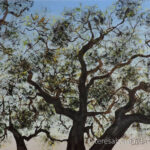
(2023)
12″ w x 9″ h
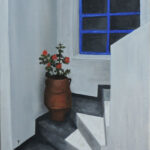
(2021)
9″ w x 12″ h
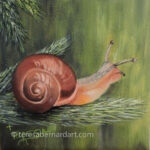
6″ w x 6″ h
Art Glossary Quick Links
Contributing to The Art Dictionary
The art definitions and terminology is a work in progress. New terms and definitions are added on a regular basis. If you know of an art term and definition that isn’t already listed in it but you believe it should be, send it to us and we’ll consider adding it. We’ll let you know if we do. Thanks!
Thanks for reading this!
